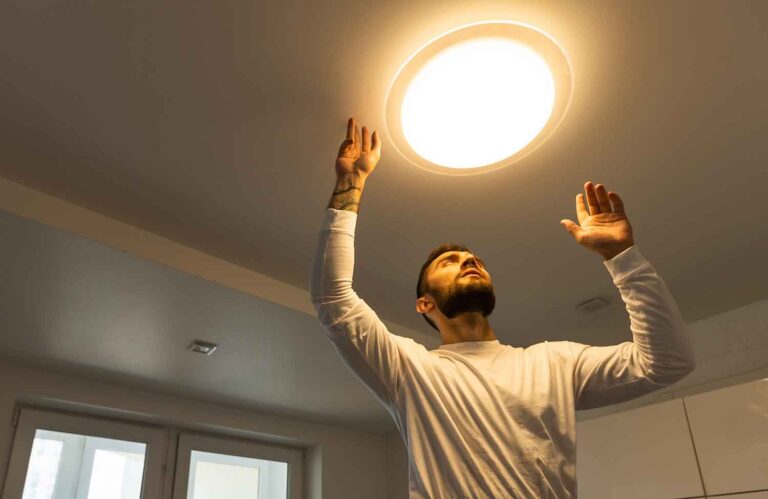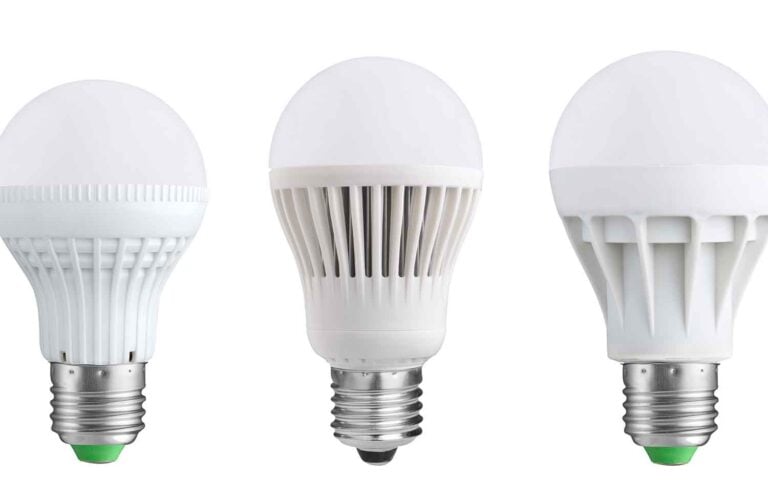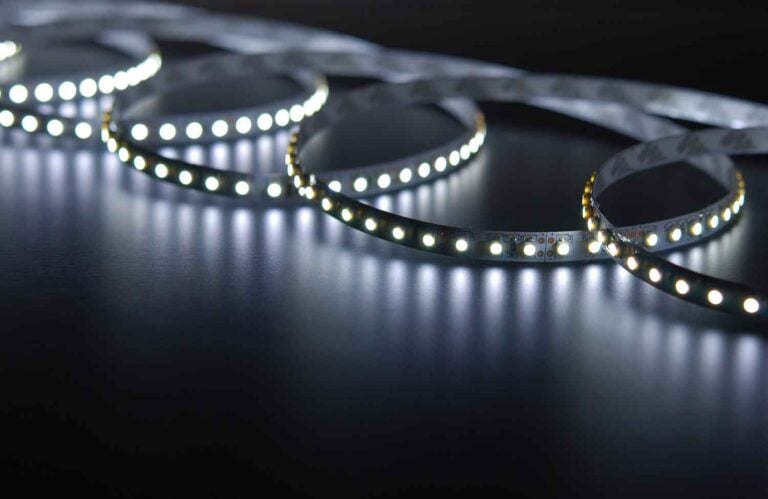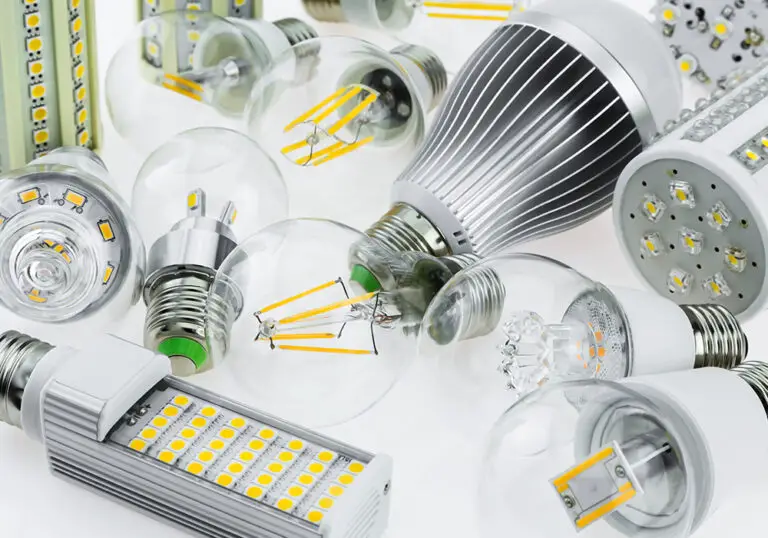Are LED Strip Lights Safe for Dogs?
As a responsible dog owner, it’s important to be aware of anything in your home that could potentially harm your pup. Any fixture or appliance that involves electricity poses a particular risk to your four-legged housemates; with LED strip lights being such a fixture, you may be wondering whether they are safe for use around dogs.
On the whole, LED strip lights are safe for dogs. The few potential hazards, like entanglement or electric shock, are only hazards if the strip lights are somewhere the dog can reach. So, LED strip lights are completely safe to use around dogs as long as they’re installed properly and securely. With that said, the light that LED strip lights can potentially impact a dog’s behaviour; particular colours like white or blue and the flickering typical of low-quality bulbs are two concerns to be aware of.
Are LED Strip Lights Safe for Dogs?
LED strip lights are generally safe for dogs as long as appropriate precautions are taken with their installation and usage. Responsible dog owners should have no issue with using LED strip lights in their homes; there are only a few potential hazards with these lights that are easy to avoid using common sense.
How Can LED Strip Lights Be Dangerous to Dogs?
LED strip lights only pose a hazard to dogs if they’re installed in a location that the dog can reach. In other words, LED strip lights can be dangerous if any part of the strip light or its cables are too close to the ground.
Dogs, especially young puppies, are curious creatures that use their mouths as a way to explore the world. As a dog owner, it’s almost a guarantee that you’ve found your pup chewing on something they shouldn’t; from skirting boards to shoes, anything is fair game to a dog left to their own devices. This is where the first hazard with LED strip lights can arise; if the light strip or its cables are in an accessible location, your dog has an opportunity to chew them.
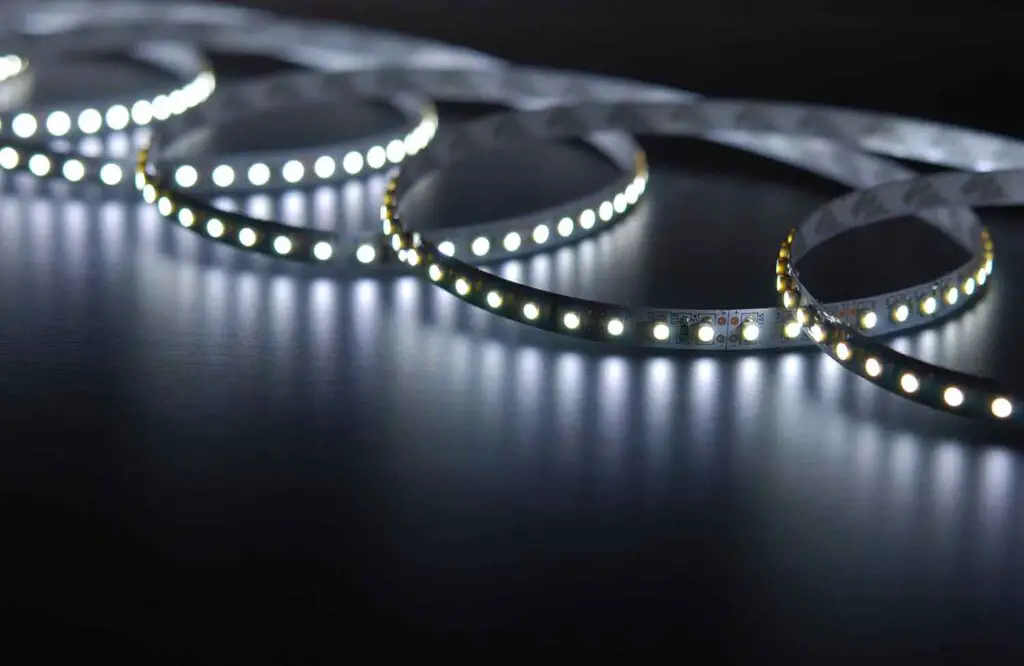
If chewed by a dog, it’s unlikely that the power cable of an LED strip light would cause a fatal electrocution. However, the electric current could still leave your dog with a serious burn on their mouth; it may also harm your dog’s health by disrupting other bodily functions due to the shock.
Furthermore, loose wires and cables create the risk of entanglement, another potential danger LED strip lights pose to dogs. An unsupervised dog could easily become tangled up in the loose cables; not only would this be highly distressing, but it could even choke the dog if the cables wrap too tightly.
With these hazards in mind, the key is to ensure the LED strip lights are secure and inaccessible to pets. You should install the lights as far away from the ground as possible; it’s also essential to ensure all cables are securely fastened and flush with the wall. In addition to protecting your pets, taking these measures will also protect your fixtures from becoming damaged.
Are LED Light Strips Harmful to Dogs’ Eyes?
LED light strips can potentially be harmful to dogs’ eyes. Although this isn’t a major concern, you should still be aware of how LED lights can affect your dog’s vision. In short, LED light bulbs can flicker, having a strobe-like effect that’s visually detectable by dogs.
Older bulb types like incandescent and halogen bulbs use heated filaments to produce their light. These traditional bulbs are prone to flickering or giving off overly bright light, effects easily seen by the human eye. LED bulbs, on the other hand, use light-emitting diodes to produce light. Unlike traditional bulb types, LEDs do not flicker or fluctuate in their light output as seen by the human eye.
However, dogs have much more sensitive eyes than humans. Some lower-quality LED bulbs actually do flicker at a speed we humans can’t detect; although we aren’t able to see it, our dogs are over three times more sensitive to this flickering. Lower-quality LED lights can therefore have a strobing effect on our visually sensitive canine friends. In the short term, the flickering can be distressing to your dog; and, with prolonged exposure, it can have a long-term impact on the quality of your dog’s eyesight.
To avoid this potential hazard, you must purchase high-quality LED strip lights from a reputable brand. Lower-quality strip lights are more likely to flicker as they contain lower-quality components. As an additional tip, keep your LED lights off when you aren’t in the room; this will benefit your dog’s health while keeping your energy consumption to a minimum.
Can Coloured LEDs Affect Dogs’ Behaviour?
The colour of your LED lights can also impact your dog’s behaviour and well-being. Bright white and blue shades are the two lighting colours that you should be wary of using around your dog.
The majority of LED strip lights are RGB enabled, allowing you to pick from one of around 16 million colours. The colour of your LEDs can significantly alter the ambience in a room; they can also have a direct effect on your mood and brain chemistry. For example, research shows that blue and bright white lights can negatively impact your circadian rhythm. This light shares the same spectrum as sunlight and therefore triggers an ‘awakening’ response in our brains. It can make you feel alert and active at night as it tricks your brain into thinking it’s the daytime.
Research shows that this negative effect of blue light affects a lot of species, not just humans. As it does to us, blue or bright white light can throw off a dog’s natural circadian rhythm; it can disrupt your dog’s sleeping pattern and cause them to feel alert and awake when they should be asleep. In comparison, the same research shows that yellow and green light has a significantly lesser effect on animals in this way.
You can reduce the impact of your LED strip lights on your dog’s behaviour by opting for these warmer colours. Avoid using bright white or blue lights where possible; do not exceed a colour temperature beyond 4000K to reduce the amount of blue light your LEDs emit. Also, take care not to overexpose your dogs to the LED lighting before or during their bedtime.

